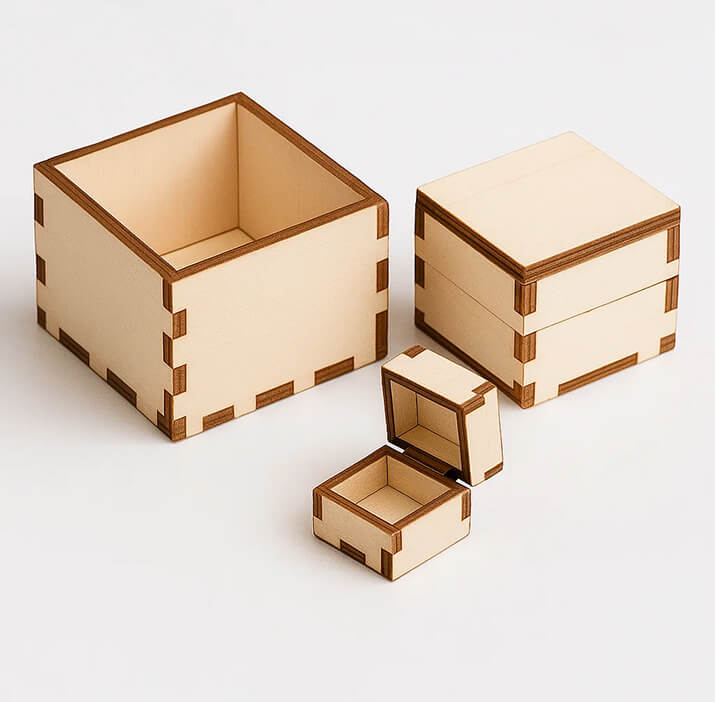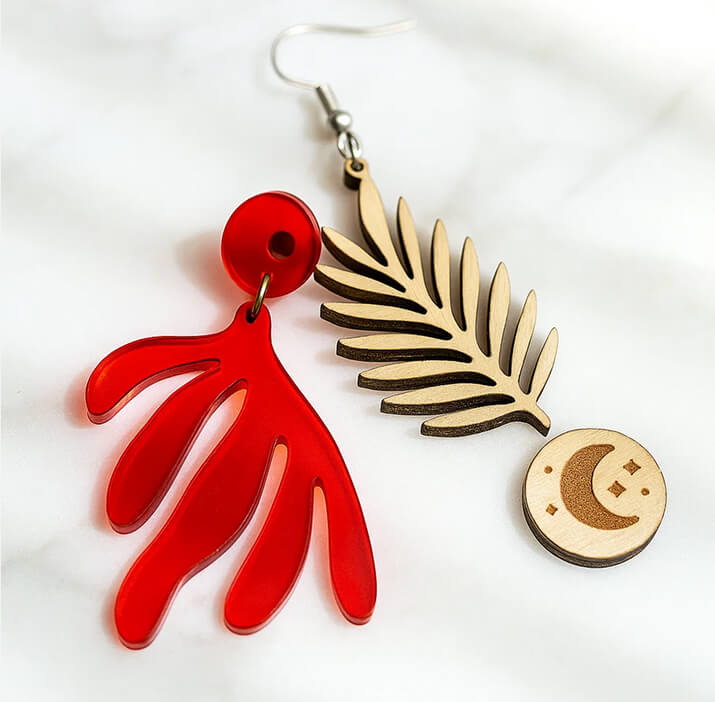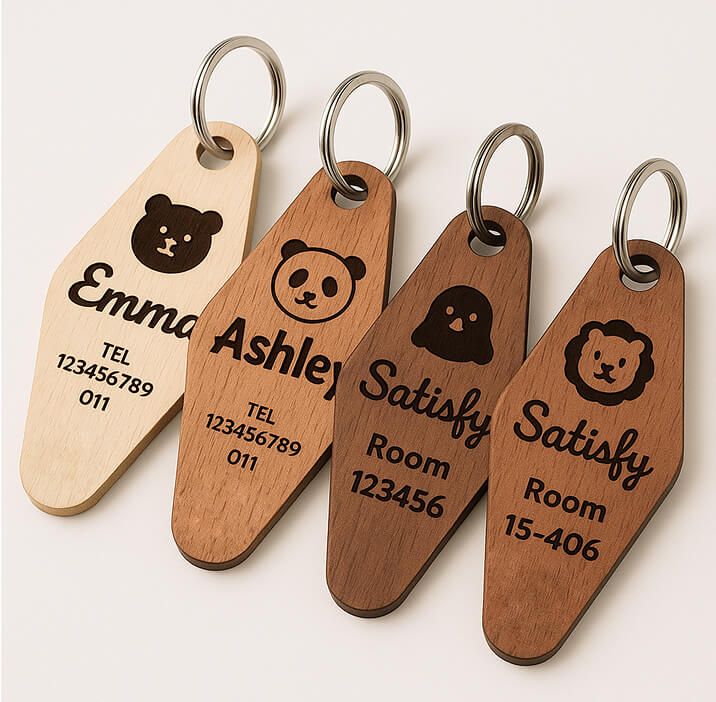![[Laser cut and engrave] Odd Box](https://storage-us.atomm.com/resource/xart/result/14225/92839139-343b-4c5b-8d17-27dd550ffd2e.png?x-oss-process=image/resize,w_1200,h_900,limit_0/interlace,1/format,webp/auto-orient,1)
Odd Box
Information
In my workshop's hallowed halls, where traditional tools once reigned supreme, I embarked on a unique endeavor: crafting a box solely with my xTool S1 40 Watt laser machine. Driven by a desire for exclusivity, I selected half-inch pine and quarter-inch Coco bolo wood as my materials. This masterpiece, born from the precision of laser technology, stands as a testament to the boundless possibilities of modern craftsmanship. I invite you to embark on your own laser-crafted box-making journey, creating a one-of-a-kind treasure that will ignite your imagination. sound.
I invite you to embark on a similar journey, experimenting with your own laser machine and materials to create a truly exceptional box.
Instruction
Step1: Cut your pieces
**Step: Selecting Wood and Cutting Elements**
Choose your desired wood. In this example, half-inch pine was used for the box's exterior, while quarter-inch Coco bolo wood was used for the drawer face.
The attached file contains cutting elements for the box's back, front, face, knob, and drawers.
To achieve a golden brown cut instead of a black charred cut, adjust your laser machine's settings as follows:
1. **Layer 1:** Set power and speed for five passes.
2. **Layer 2:** Set power and speed for five passes again, but increase the depth by 3mm.
3. **Layer 3:** Set power and speed for five passes, and increase the depth by 6mm.
**Cutting the Cocobolo Faceplate**
The Cocobolo faceplate requires multiple passes to cut through its dense wood.
Once you have imported the cutting file into X-Tools Creative Space, follow these specific instructions included in the file
This will ensure a clean and precise cut. prevent overheating.
Step2: Gluing Up Your Box
**Gluing the Box**
1. **Prepare the pieces:** Ensure that all laser-cut pieces are clean and free of debris.
2. **Glue the back plate:** Place the back plate flat on your work surface. Apply glue to one edge of a housing piece and align it with the back plate. Clamp the pieces together.
3. **Glue the housing pieces:** Continue gluing and clamping the remaining housing pieces one at a time, carefully aligning each piece. Use four pistol grip clamps to ensure a tight fit.
4. **Check alignment:** Double-check the alignment of the pieces before the glue sets.
5. **Glue the drawer:** Repeat the gluing process for the drawer pieces.
**Tips:**
* Take your time and be precise with the alignment.
* Use clamps to ensure a tight fit.
* Check the alignment regularly as the glue sets. aligned before gluing.
* Use a small amount of glue and apply it evenly.
* Wipe away any excess glue immediately.
* If you notice any shifting of the wood while clamping, adjust the clamps accordingly.
**Attaching the Drawer Faceplate**
1. **Sand the faceplate:** Smooth the side of the faceplate that will be glued to the drawer front.
2. **Apply glue:** Apply a thin layer of glue to the sanded side of the faceplate.
3. **Align and clamp:** Carefully align the faceplate with the front of the drawer and clamp it in place. Avoid getting glue on the part of the faceplate that will slide into the housing.
4. **Check alignment:** Ensure that the faceplate is perfectly aligned before allowing the glue to dry.
Tip: If glue does leak onto the housing, wipe it off immediately with a damp cloth.
Step3
**Finishing the Box**
1. **Clean up:** Remove any glue residue or sawdust from the box.
2. **Sanding:** If necessary, lightly sand the bottom and sides of the drawer and the inside of the housing to ensure smooth movement.
3. **Apply finish:** Choose your preferred wood finish and apply it to the box. I recommend using a wipe-on polyurethane for a durable and easy-to-apply finish.
4. **Drying:** Allow the finish to dry completely according to the manufacturer's instructions.
5. **Enjoy:** Your new box is now complete!





